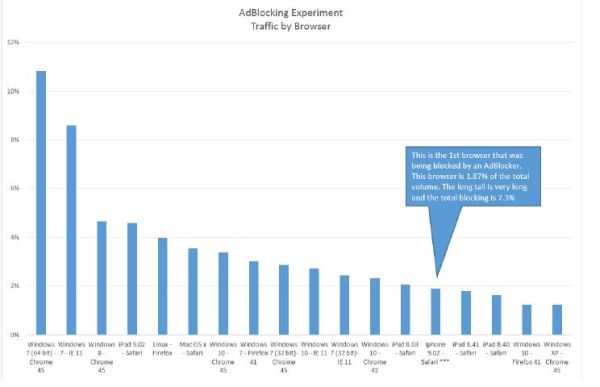
I've noticed that there are no shortage of articles published regarding adblocking, however I've noticed that not many of these articles are dealing in hard facts. Therefore, I decided to run my own adblocking experiment and openly share these results.
I quickly realised that running this experiment would be difficult and I would need to enlist some help. Given that it was the release of iOS 9.0 which kicked off the adblocking debate I felt that Apple could help. I asked them for some statistics about adblocking downloads and usage. Unfortunately, Apple were unable to comment due to privacy concerns. Slightly frustrated, I decided to go to the horses mouth and contact one of the adblocking apps directly.
I contacted Dean Murphy who is the developer behind Cyrstal which is one of the leading adblocking app. He openly shared with me the methodology of how his app works. Dean described his technology as a list based filtering tool which is based off a heavily modified version of https://easylist.adblockplus.org/en/. However, the only download statistics he was willing to share was that the app was downloaded 100,000 times during the first 12 hours while it was free as a promotion.
I was still very frustrated that I didn't have any hard metrics. Therefore, I put my engineers hat on and designed an experiment. I wanted to be able to exactly measure that amount of adblocking happening in my market.
I needed help to run this experiment so I reached out to my friends at Sizmek and Realestate.com.au. The experiment was simple. I would simply place a 1x1 tracking pixel from Sizmek on the REA page and measure the discrepancy between the log level data (LLD) between both sets of results.
Sizmek were fantastic in helping me set up this experiment. Within a few days they had created a bespoke campaign for this purpose with LLD enabled and sent me a 1x1 tracking pixel.

Realestate.com.au were equally fantastic. Within a few days they had deployed this pixel directly onto their content management system on their web site.
The test ran for precisely 24 hours on the 15 October 2015 (Australian Eastern Standard Time). The following morning both parties send me their log level data which we then uploaded into SQL for examination from data analyst and engineers. A total of 62 million rows of data were analysed.
Firstly, we needed a baseline to check that the experiment was successful. We know that adblocking is a browser extension so we examined the results per browser type. We found that for browsers that don't support adblocking, there was only a 0.1% discrepancy between the REA and Sizmek numbers. This ensured that the discrepancy was low and the experiment worked.
Next was to measure the actual adblocking rate. Once again, we know that adblocking is a browser extension so we looked for the % of impressions that we found in the REA log that was MISSING in the Sizmek log.
Unsurprisingly, we found that most impressions where clustered around the browser type "iPhone OS 9.02 and safari version 601.1". There were a few other browser versions out there that had adblocking and when summing all the adblocking numbers together we found that precisely 7.3% of impressions were captured by REA that was MISSING in Sizmek. We concluded that this was the size of the adblocking in our market.

This is only the beginning of the investigation and we will continue to investigate the numbers further for more learnings.
In summary: I personally feel that adblocking is important but it's not the "Chicken Little" event that some articles are making it out to be.


